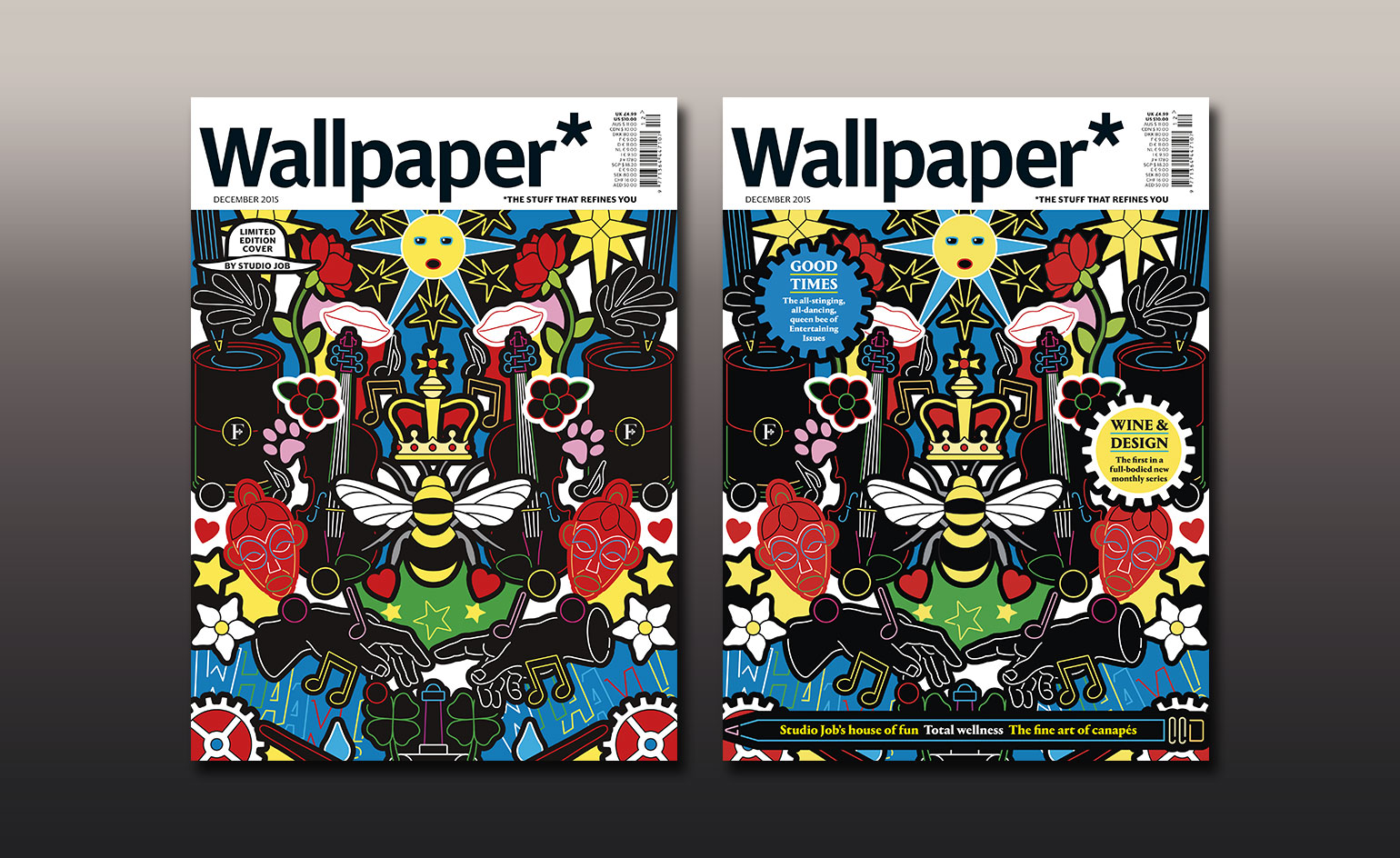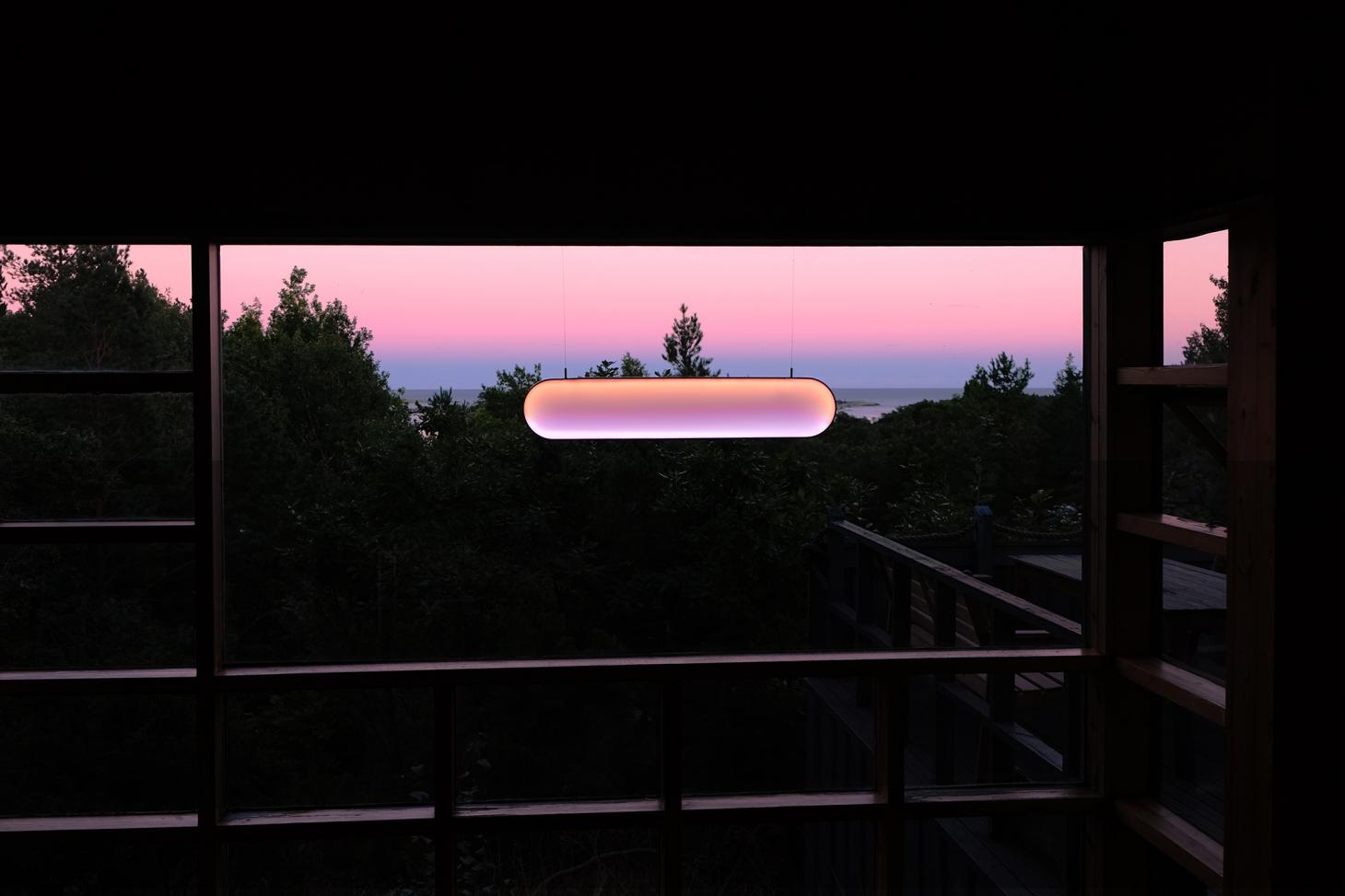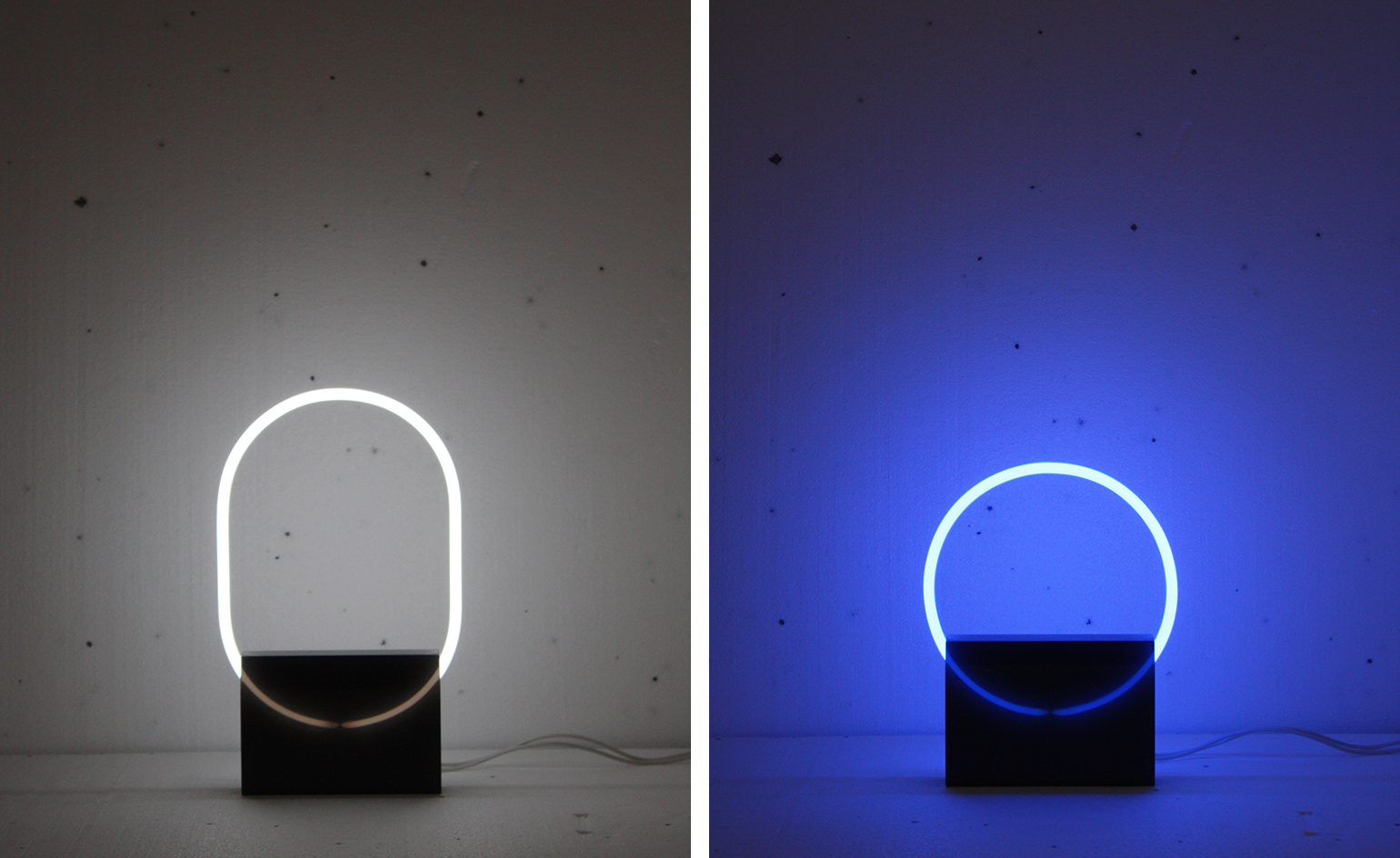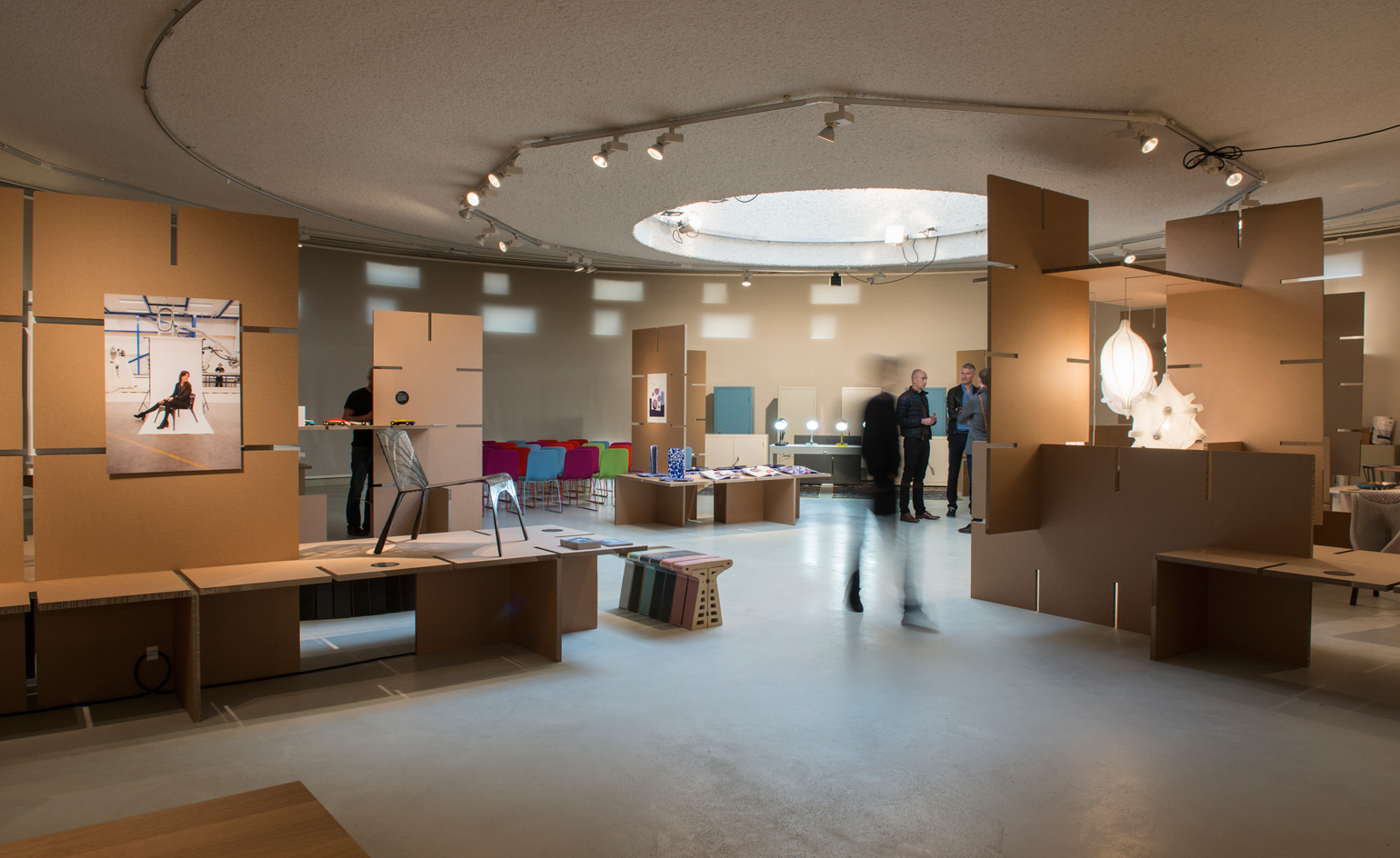House of fun: design duo Studio Job creates a maximalist pad in Amsterdam

Fresh off a plane from Antwerp, skinny, smartly dressed and bespectacled in semi-tinted shades, Job Smeets, one half of Belgian-Dutch multidisciplinary design practice Studio Job – known for its collectable objects and sculptures as much as for its more commercial products and furniture, all of which blur the lines between art and design, the abstract and the functional, fact and fantasy – is propped on an ‘Ant’ chair at the V&A café in London, eating a scone with clotted cream and jam.
‘One day, a day like any other,’ he says, taking a sip of the white wine that has replaced tea, and settling into the role of raconteur. ‘Nynke [Tynagel, the other half of Studio Job] and I were walking through Amsterdam with a plan to do a new project. We were there often for work, always staying at hotels, so we thought why don’t we create our own suite here? Not only a place to live and an investment project, but also a giant Gesamtkunstwerk.’
Soon thereafter, Smeets and Tynagel – who founded Studio Job in 2000 after both graduating from Design Academy Eindhoven – bought a 150 sq m flat on the second floor of a 1922 red brick townhouse, built in the Amsterdam School style of architecture popular in the early 20th century, in the Oud Zuid neighbourhood of the charismatic Dutch capital.
Not so many months later, the apartment has been transformed into the Studio Job Suite: a bright, fantastical yet functional home that is at once an archive of important art and design, but also a fun-house of sorts, with a colourful, Playmobil sensibility.
‘This was essentially an interior commission to ourselves,’ says Smeets. ‘It’s a very concrete situation, a way for us to put to use the midcentury furniture we collect, the contemporary work of friends and artists, and our own work – to take it out of storage and ensure that it doesn’t just sit there collecting dust. There’s no business plan, no schedule or long-term intent. The only aim is to create some kind of functional atmosphere that is still a little bit off from the normal.’
After restoring the flat, reinstituting its original 1920s floorplan and even reinstalling original Amsterdam School heaters throughout, Smeets and Tynagel set about outfitting the space with a playful combo of new gothic meets modernism. Throughout, resin floors were inlaid with a cartoonish interpretation of wooden parquet, a print originally used when Studio Job did the scenography for the Viktor & Rolf A/W 2013 catwalk show in Paris, subsequently produced by Senso. The Studio Job for NLXL wallpaper that wraps the majority of the apartment in two-dimensional grey brick rectangles offers an equally fanciful solution and takes a deceptive turn in the kitchen and bathroom, where the same pattern has been recreated in tiles.
The mint-green kitchen is a replica of a classic 1920s model by the Dutch industrial designer Piet Zwart, custom-made in Studio Job’s own Antwerp atelier and finished off with handles cast in bronze.
Indeed, the entire suite reveals a conversation between the historic and the new. From Ettore Sottsass’ ‘Lotorosso’ table for Poltronova and Cees Braakman’s ‘EB02’ desk, to the ‘Fruit On Wheels’ bowl by Arnout Visser and ToiletPaper’s foam tombstone for Gufram, furniture, objects and art are combined fearlessly across genre and style.
‘These projects are partly an effort in conservation. They’re not merely a styling exercise, rather the aim is to create contextually relevant environments that pay respect to the local design and architecture traditions,’ says Smeets, ‘but they’re also about collaborations with contemporary designers and even with the dead.’
On the one hand, the duo asked Jaime Hayon to make a vase; on the other, they bought a portrait by Constant Permeke, a Belgian painter who was a leader of Flemish expressionism. Studio Job created a new frame for the stunning portrait of a young boy. ‘We couldn’t ask him to collaborate as he’s long dead, but that, too, became a kind of dual participation.’
In theory, all the patterns, materials, colours, eras and styles shouldn’t necessarily work when combined in one space, but in Studio Job’s version of practice they do: it’s a world where eclecticism makes sense, a place where ‘over the top’ seems to lose its negative connotation. It all feels a bit fairytale, a kind of interior fiction where you’re not entirely sure whether it’s intended to be earnest or ironic, or more likely, some combination of the two. In an interior design landscape where soft Scandinavian minimalism and a hyper-luxurious brand of contemporary have reigned supreme, Studio Job offers a refreshing maximalism, a modern-day take on baroque that’s, well, light-hearted and fun.
The suite continues what has become a bit of a Studio Job tradition of restoring properties and turning them into often liveable projects – spaces where Smeets and Tynagel are decorators, curators and of course, designers, situating their own work and that of others in a city-specific context. First came the Studio Job Gallery, an industrial space in Antwerp, followed by the Studio Job Lounge at the Groninger Museum, and the Studio Job House, a boxy, white modernist villa built by a student of Gerrit Rietveld in Bergeijk in the Netherlands, which the duo restored in 2011 (W*152). There’s also the Studio Job Loft in Antwerp, where Smeets currently resides, while Tynagel now calls the new Amsterdam space home.
‘I’ve been in the flat for two months and it’s a dream environment,’ Tynagel wrote in an email from Buenos Aires, where she had flown for the opening of ‘Futopia’, an immersive Studio Job exhibition at the Faena Arts Center. When asked about the best part of being your own client, she wrote: ‘There are no restrictions. This is the most direct reflection of our minds.’
Up until about a year ago, Tynagel and Smeets were personal as well as professional partners. The new suite is, perhaps, the ultimate testament to the fact that the pair remains not only friends, but also ‘extreme soulmates’, as Smeets puts it, an affirmation that the tangible, inhabitable type of fantasy they have become known for creating over the past decade is alive and well. ‘I think the interior turned out particularly well because it looks friendly and happy, whereas some of our work doesn’t look happy at all,’ says Smeets. ‘You can see that we enjoyed ourselves in the making of a space that is very true to us as individuals. I mean, look around and it’s rather obvious we had fun, no?’
As originally featured in the December 2015 issue of Wallpaper* (W*201)

Pictured left: Job Smeets and Nynke Tynagel with their 2014 ‘Globe’ cabinet for Gufram and, on the table, a 1970 breakfast tableware set by Pierre Cardin for Franco Pozzi. Right: on Studio Job’s ‘Paper Buffet Patchwork’ for Moooi is a 1968 ‘Cirkellamp TC6’ by Aldo van den Nieuwelaar and a 2014 ‘Carter’ vase by Floris Hovers for Cor Unum

Pictured left: a reimagining of a 17th-century flower pyramid by Studio Job for Royal Tichelaar Makkum. Right: a 1960s bench designed by the Dutch architect and monk, Dom Hans van der Laan, for St Benedictusberg Abbey in Mamelis, Vaals. On the wall is a poster of Gerrit Thomas Rietveld’s ‘Red Blue’ chair

The design duo also created the newsstand and limited-edition covers of W*201, a bold interpretation of the December issue’s entertaining theme
INFORMATION
For more information, visit Studio Job's website
Receive our daily digest of inspiration, escapism and design stories from around the world direct to your inbox.
-
 The Bombardier Global 8000 flies faster and higher to make the most of your time in the air
The Bombardier Global 8000 flies faster and higher to make the most of your time in the airA wellness machine with wings: Bombardier’s new Global 8000 isn’t quite a spa in the sky, but the Canadian manufacturer reckons its flagship business jet will give your health a boost
-
 A former fisherman’s cottage in Brittany is transformed by a new timber extension
A former fisherman’s cottage in Brittany is transformed by a new timber extensionParis-based architects A-platz have woven new elements into the stone fabric of this traditional Breton cottage
-
 New York's members-only boom shows no sign of stopping – and it's about to get even more niche
New York's members-only boom shows no sign of stopping – and it's about to get even more nicheFrom bathing clubs to listening bars, gatekeeping is back in a big way. Here's what's driving the wave of exclusivity
-
 Snarkitecture and Gufram unveil bubblegum pink furniture
Snarkitecture and Gufram unveil bubblegum pink furnitureSnarkitecture and Gufram revisit their 2017 ‘Broken’ series, bringing a new bubblegum pink shade to their furniture collaboration
-
 Solar light by Marjan van Aubel brings the sun’s colours indoors
Solar light by Marjan van Aubel brings the sun’s colours indoorsThe new ‘Sunne’ solar light by Dutch designer Marjan van Aubel captures the sun’s energy and mimics its glow, evoking sunrise and sunset in your living room
-
 Amsterdam's grand Felix Meritis unveils contemporary refresh by i29
Amsterdam's grand Felix Meritis unveils contemporary refresh by i29Dutch architecture studio i29 is behind the listed Felix Meritis building's interior restoration and redesign in Amsterdam, a scheme bringing together historical glamour and contemporary design sophistication and technology, while enriching the city's culinary and cultural scene
-
 In the loop: the making of Sabine Marcelis’ neon circles of light
In the loop: the making of Sabine Marcelis’ neon circles of light -
 The Design Circle: kneeling at the altar of Amsterdam’s Art Chapel
The Design Circle: kneeling at the altar of Amsterdam’s Art ChapelAn exhibition at Amsterdam's modernist Art Chapel paints a sweeping picture of Dutch design today
-
 The highlights: Dutch Design Week 2013
The highlights: Dutch Design Week 2013 -
 Dutch Design Week 2012
Dutch Design Week 2012